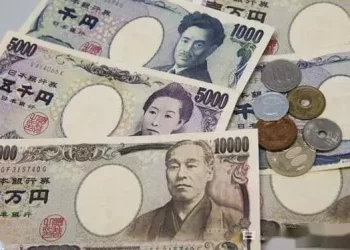Many people think it is determined, that is, the exchange rate between countries is calculated according to this standard.
Or is it?
How is a country’s exchange rate determined?
The exchange rate between countries is not calculated according to any formula, but is determined by the supply and demand of resources for the people of both countries and the supply and demand of resources denominated in their own countries.
That is, it is determined by everyone’s demand for foreign goods and the supply of goods they can provide to foreigners.
It is well known that foreigners’ demand for Chinese resources has been growing steadily since China’s rapid accession to the WTO.
Resources they are willing to value.
As demand increases, they are willing to exchange a little less yuan.
This is the appreciation of the renminbi.
We can find that it is not calculated according to any formula, but determined according to each person’s actual demand for foreign goods and actual exchange behavior.
This is the first determinant of the exchange rate, namely the supply and demand of international resources.
The second determinant is the amount of money a country produces.
The larger the issue, the higher the exchange ratio.
When the supply and demand of resources remain constant, the value of money will decline in relative terms.
In other words, increase the issuance, the exchange rate will fall, the domestic currency will depreciate.
The third factor that determines exchange rates is what a country does.
It is well known that exchange rate fluctuation is a risk that can cause great losses to people engaged in international trade, so they want to avoid this risk.
But from a national perspective, if domestic exchange rates remain stable, it is good for international trade.
As a result, some countries impose controls on exchange rate movements, known as exchange controls.
On closer inspection, you will find that the above three factors are contradictory.
The exchange rate is determined by various factors.
Which of these three factors is dominant?
Which factor will prevail in this competition?
Here we come up against the “impossible triangle law” of exchange rates.
That said, three objectives are desirable for any country: first, the free movement of capital.
That said, the free flow and exchange of domestic and foreign currencies is unambiguously a good thing.
Second, every country wants a stable exchange rate.
It is especially good for international trade, so the government also wants to achieve a stable exchange rate.
Third, the government wants to regulate the circulation of its currency through the central bank.
We hope to influence the development of national economy by adjusting circulation.
Just as every government wants monetary autonomy, that is, central banks can adjust the amount of money they create.
The “impossible Triangle law” stresses that any government can account for only two of these goals, not all three.
In other words, the government will have to choose two, not three, options: free flow of foreign exchange, stable exchange rate, and autonomy in currency issuance.
So, is it better to have a higher or lower exchange rate against foreign currencies?
The exchange rate of a country’s currency is actually the value of that country’s currency.
It more accurately describes the value of the various resources priced in that currency.
Everything has an optimal range, that is, appropriate is best.
If the exchange rate is too high, people will sell their own currency and hold foreign currency.
If the exchange rate is too low and the price of national resources is too low, it will flow abroad and sell national resources at a low price.
British bank of unexpected interest rate rise dollar fell, gold breakthrough 1800, nonferrous iron ore rose.
Please pay attention to the specific operation, the market is changing rapidly, investment needs to be cautious, the operation strategy is for reference only.

























